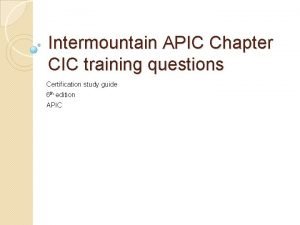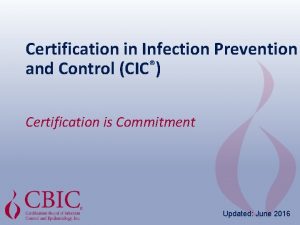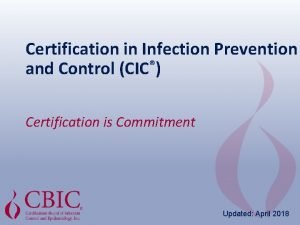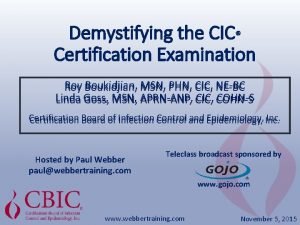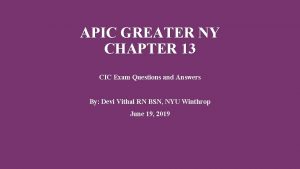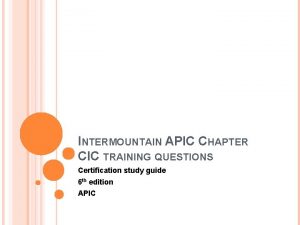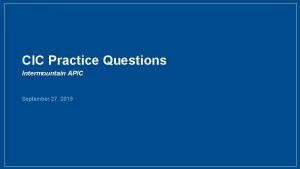Intermountain APIC Chapter CIC training questions Certification study







- Slides: 7

Intermountain APIC Chapter CIC training questions Certification study guide 6 th edition APIC

Q 1: �Anaerobic cultures should be used for any of the following sites except: 1 - Blood. 2 - Trans tracheal aspirate. 3 - spinal fluid. 4 -sputum.

Answer : Sputum (Ch 3, P 66, Q 49) � An anaerobic bacteria culture is a method used to grow anaerobes from clinical specimen. Anaerobes are commonly found on mucous membranes and other sites such as the vagina and oral cavity. Therefore, specimens likely to be contaminated with these organisms not be submitted for culture. Specimens that are not suitable for anaerobic cultures includes: � Sputum � Rectal swab � Nasal or throat swab � Urethral swab � Voided urine

Q 2: �The incubation period for Pertussis in immunocompetent person is usually: a- 7 -10 days. b- 3 -5 days. c- 1 -2 days. d- 2 -4 days.

Answer: 7 -10 days (Ch 3, P 54, Q 8) �Pertussis ( Whooping cough) is a highly communicable, acute, infection respiratory disease caused by Bordetella pertussis. The incubation period of pertussis in immunocompetent is usually a 7 -10 days, with a range of 6 -21 days. In rare cases, the incubation period maybe as long as 42 days.

Q 3: �All the following organisms can penetrate the intact epithelium of the conjunctiva or cornea except: 1 - Staphylococcus aureus. 2 - Streptococcus pneumoniae. 3 - Neisseria meningitides. 4 - Neisseria gonorrhoeae.

Answer: Staphylococcus aureus ( Ch 3, P 60, Q 27) �Healthcare-related ocular infection are rare but lead to catastrophic consequences such as compromised vision and/or blindness. Only few organisms can penetrate the intact epithelium of the conjunctiva or cornea, like Neisseria meningitides and gonorrhoeae, Streptococcus pneumoniae, Listeria monocytogenes. For all others, a breach in the protective epithelial barrier or mucous membranes
